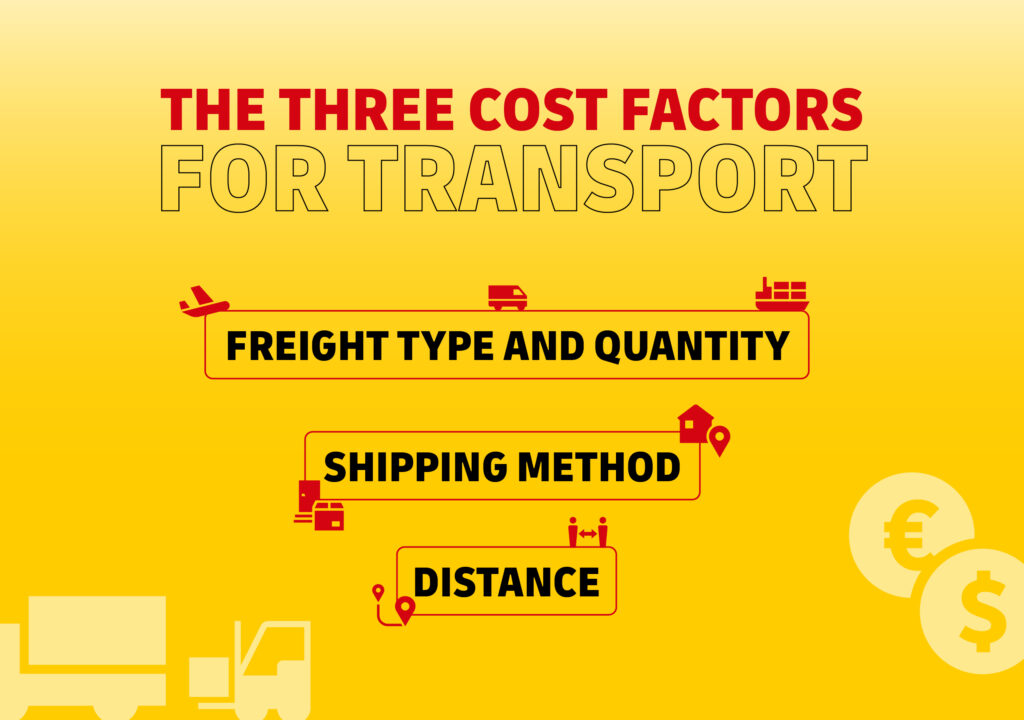Estimate Freight Shipping Costs: A Comprehensive Guide
Freight shipping costs can be confusing. It's a huge topic! You want the best rates, right? (Me too!)
This guide helps you understand how freight shipping works and gives you tips to get the lowest prices.
Understanding Freight Shipping Costs

Source: dhl-freight-connections.com
Freight shipping is different than shipping small packages (like from Amazon!). It deals with larger shipments, whether it's furniture, electronics or even whole building materials (huge!). Freight carriers are specialized to move these things. Several factors affect costs:
- Distance: The farther the shipment, the higher the cost (it makes sense).
- Weight and Dimensions: Larger items obviously cost more to ship.
- Type of Freight: Different items (e.g. liquids, temperature controlled products) have unique needs and prices.
- Pickup and Delivery Points: Locations matter (think about city congestion)!
- Insurance: More value, more risk, higher costs. Make sure you insure it well, don't want to lose it!
Questions to Ask Before You Ship
- What are your shipping options (how many carriers do I even pick from)?
- What is the weight and dimensions? (Measurements matter!)
- What's the pickup point, drop off points? (These have some influence on costs!)
- Where is the shipping going? (Country matters too, remember?)

Source: freight-calculator.com
Different Freight Shipping Methods
Choosing the right method affects your price.
- Truckload: A whole truck for one shipper. Expensive but can be efficient.
- Less-Than-Truckload (LTL): If you don't have a whole truck to fill, this might be more cost-effective (and quite helpful too). (Use LTL if the weight of the goods is less than a whole truck).
- Rail: Expensive but for very heavy items this works (imagine how many trucks could hold the goods!). Good for huge amounts.
- Intermodal: Uses a combination of transportation modes like rail and truck (efficient, cost-friendly, and quick). It helps cut down costs in general!
How to Compare Quotes

Source: bafcointl.com
Ask multiple freight companies (many to pick from!). Getting quotes from various carriers (make your lists, write things down!), review all factors before making decisions!
- Get quotes online. Some companies offer instant online calculators. You need an estimate first, yes?
- Ask your friends who have experience! Network and seek insights, talk to the others, who else can share experience. It's worth it!
- Verify accuracy with the calculator you find, this can reduce mistake (good practice, right?)
- Read reviews to check the quality (how fast did others get their orders delivered?! important information.)
Negotiating Freight Shipping Costs
Negotiation is possible, especially with bigger volumes (more volumes = higher chances to reduce the costs). This is also valuable to know and take care of when getting into business!
- Volume Discounts: Many freight companies offer lower rates for large volume.
- Contracts: Agree to consistent shipping patterns (set patterns if your company frequently orders).
Tip: Try to pre-book shipments. The more preparation you have for shipping, the lower the shipping costs are possible!
Calculating Your Freight Costs
Here's a step-by-step process (using the data for each delivery), helping estimate:
- Gather details (about shipment details): dimensions, weight, pickup/delivery addresses, insurance options). This helps give your freight companies all information needed.
- Search online for carriers. Choose wisely (check their track record!) and compare prices, which carriers work better and provide good deals and support. (important point to look after).
- Compare various quotes (review each of them closely!), factoring distance, freight type, volume, and insurance cost.
Shipping Freight Across States:
Cross-state shipping often involves connecting trucking services across the network (they may help bridge these differences for efficient delivery).
Tip: Some companies specialize in regional trucking services. Check those out to lower your shipping costs if you only transport to states with smaller ranges.
Tips to Reduce Your Freight Costs
Be precise and accurate when shipping; make the data you'll send correct and complete, with proper shipping descriptions that include specifics and dimensions. You're trying to make the delivery less complicated in all senses.
- Shipping Timing: Consider delivery time, this changes shipping fees and helps determine if there is a cheaper period (are you only looking at short distances?! Consider that and all important parameters to lower costs!)
- Packing Materials: Ensure the shipping materials (make sure these boxes and whatever support materials can support your goods) properly support the weight and contents of your items, and are suitable for safe transportation.
- Route planning: Find better transportation routes and evaluate costs before you schedule deliveries, ensuring there are no hindrances and all relevant steps have been planned.
Hidden Freight Shipping Costs
- Handling Fees: Costs may increase depending on particular requirements.
- Special Services: Some specialized deliveries have specific surcharges (look out!). Be well-versed before your order!. Understand if you need such options to get better options to cut down cost!
- Taxes: Ensure you know and consider local taxes for each destination in all applicable places for each shipment you have made to save money for that and in case of hidden charges in any point in the process of delivering it!

Source: shipbob.com
Conclusion
Estimating freight costs isn't hard (now you can make use of these steps that help cut costs) when you understand the factors and make strategic plans. Choosing the right carriers (a big role!) and considering special options like volume discounts help save on expenses!



